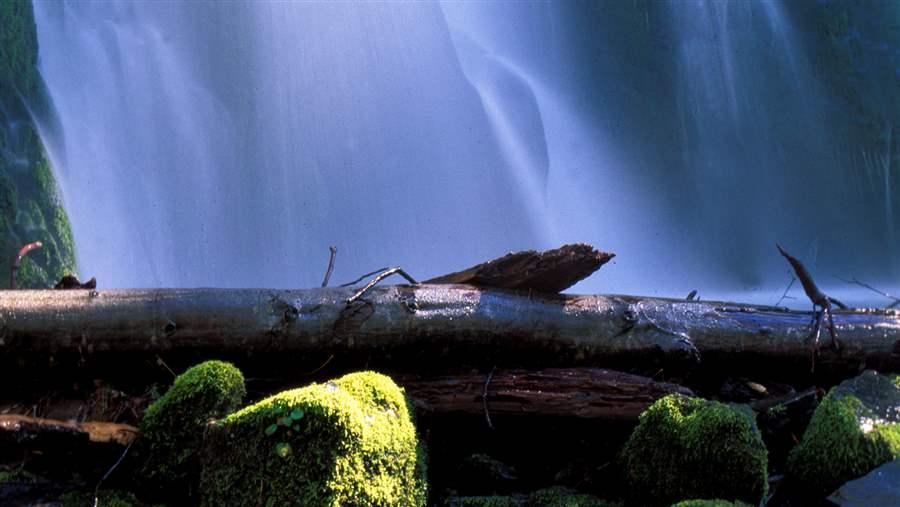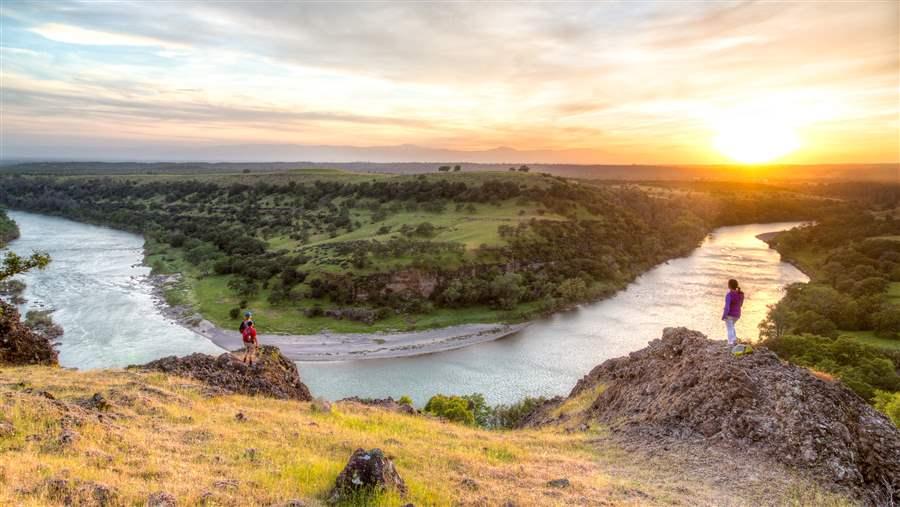Remote but Facing Threats, Northwest California Needs Conservation
Continued commonsense management of BLM areas carries economic and recreation benefits

Lacks Creek offers stunning scenery and is popular with hikers and mountain bikers.
Bob Wick/BLM
Northwest California boasts some of the most unspoiled land in the region, with isolated redwood groves, oak woodlands, winding rivers and streams, and habitat for a wide diversity of wildlife, including bald eagles, salmon, steelhead, and sandhill cranes.
Ranging from the North Coast to the Central Valley to the Sierra Nevada foothills and tucked between national forest and private property, these Bureau of Land Management (BLM) areas—all within the Northwest California Integrated Resource Management Planning (NCIP) area—also hold cultural significance to Native Americans and are important sources of clean drinking water for nearby communities.

Hikers watch the sunset above the Sacramento River Bend, which is on BLM land and features excellent salmon and steelhead trout fishing.
© Bob Wick, BLM
The value of these public lands doesn’t stop there: They also are vital forces in revenue generation for an eight-county area. In a 2017 ECONorthwest report commissioned by The Pew Charitable Trusts, researchers found that visitors participating in “quiet recreation” such as hunting, camping, hiking, and mountain biking in the lands overseen by the BLM’s Arcata and Redding Field Offices generate $50.2 million in total economic output annually, including $41.2 million in direct spending on those activities within 50 miles of recreation sites, and support more than 570 local jobs.
The BLM is updating its management plan for the area and, in light of the natural, recreational, and cultural value of the lands, Pew is working with local partners to ensure that the final plan strikes a commonsense balance among conservation, recreation, and development.
Among the notable spots within the region:
The Sacramento River Bend Area is where visitors can see what California’s Central Valley looked like before the development of agriculture and cities. The river is home to salmon and steelhead trout. Hikers climbing to Jed’s Overlook enjoy views of Mount Lassen and the Trinity Alps, and may see sandhill cranes and bald eagles.
Eden Creek, about 60 miles northwest of Fort Bragg, flows into Elk Creek, which has a major tributary of the Middle Fork Eel River. The Eel hosts more than a third of California’s remaining summer-run steelhead trout population, and many of the river’s tributaries are important habitat for salmon and steelhead. Bald eagles and the world’s most widespread distribution of Sargent cypress are found here.
Nearby English Ridge features slopes forested with ancient Douglas firs and some of the greatest diversity of oak trees in the state. The Eel River bisects the western portion of English Ridge and provides the only access to the area via kayak, canoe, or raft. The Interior Department recognized this area as among the “crown jewels” of special places managed by the BLM.
Beegum Creek, southwest of Redding and adjacent to the Yolla Bolly-Middle Eel Wilderness, is surrounded by oak woodlands, grasslands, and chaparral. The area is home to ospreys and bald eagles and is known for its swimming, fishing, cross-country hiking, and camping.
Further north, Lacks Creek is an oasis amid areas that are being heavily logged and developed. The meadows, streams, and oak woodlands are popular with hikers and mountain bikers.
The North Fork Trinity River, which flows through the rugged and beautiful landscapes of Shasta Trinity and Six Rivers national forests, is prized for fishing, boating, and swimming. The BLM-managed watershed provides habitat protection for this important local resource and opportunities for public access.
Communities in Northwest California have benefited for years from the protection of these public lands, which resulted from collaboration between community and local BLM leaders.
We encourage the BLM’s Arcata and Redding Field Offices to continue this legacy of conservation so that future generations can also experience the solitude and wild of the great outdoors.
Ken Rait directs The Pew Charitable Trusts’ western lands initiative.











